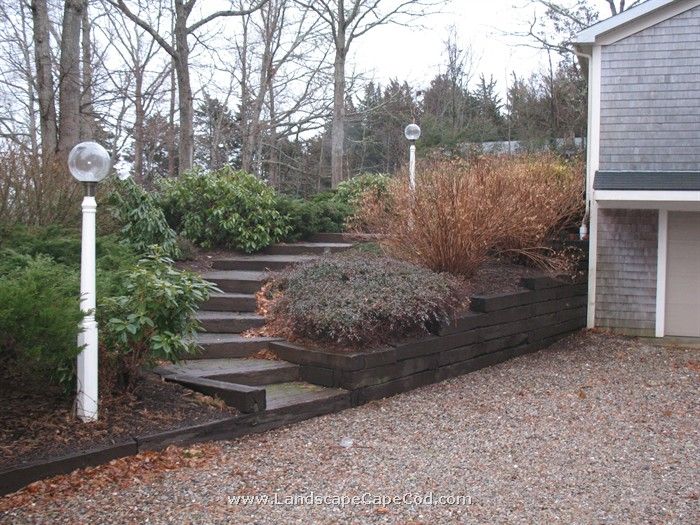Railroad Tie Retaining Wall With Steps

Wood retaining wall instructions.
Railroad tie retaining wall with steps. Dig a trench 12 inches deep around perimeter of retaining wall. How to build a railroad tie retaining wall. Thus the thought to build a railroad tie retaining wall comes in. Great for edging retaining walls and other landscaping projects.
We had 18 inches of a hill that n. Retaining walls are among the most common things people build with landscape ties. Treated wood railroad tie can be used to add an attractive natural looking touch to your landscape project. One of these walls is made up of ranks or horizontal rows of treated wood.
Republished below is a step by step guide via instructables. It can be used for a variety of applications such as creating steps and walkways. The ties are held to the ground and each other with spikes of rebar. We ll be showing you how we made a railroad tie retaining wall in between two of our shops.
If you have a slope that is need of a retaining wall and have access to railroad ties this is the perfect project for you. Stretch another level line near ground to represent the top of the first course of landscaping timbers. Railway ties to make the wall out of your planning step will result in an approximate quantity if it isn t easy to go and get some more ties you might want to add a couple more scrap 2x4 for the temporary post braces 6x 48 inch pieces should do the job or just two if you want to go slowly scrap wood stakes to anchor the temporary post braces concrete i use 80 premix bags one or two. Cutting a large part of a sloping yard out to make room for a livable usable back yard is a possible solution with the addition of a retaining wall.
Step 1 measurements. Use the following guidelines to construct your own wall. If you want a retaining wall with rustic charm consider building a railroad tie retaining wall. Once the ground is prepared the process of building a railroad tie retaining wall is very straightforward.
Set up wooden stakes and nylon strings to represent the height and perimeter of the retaining wall. For railroad tie retaining walls or taller raised beds additional reinforcement in the form of vertically oriented ties in the front of the wall at joints and corners or deadmen anchors halfway. It is typically 7 in.














































